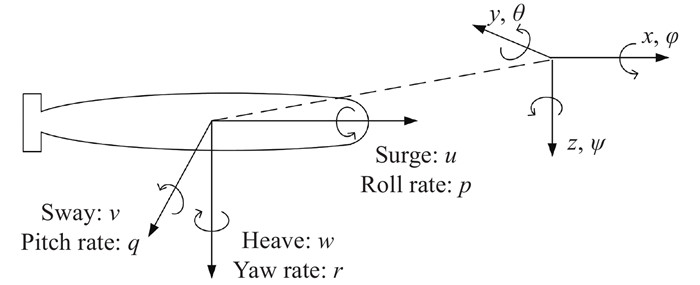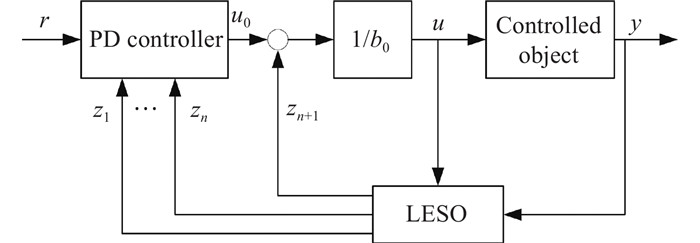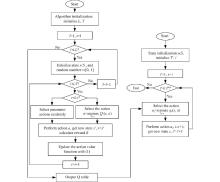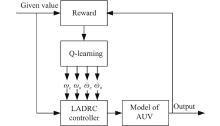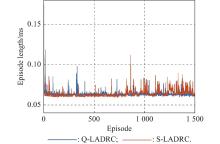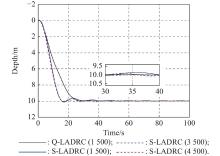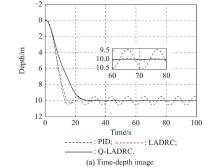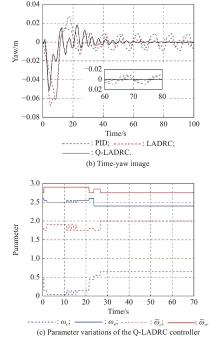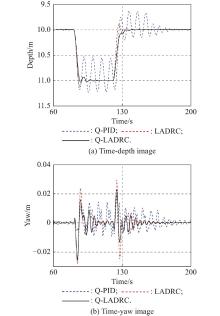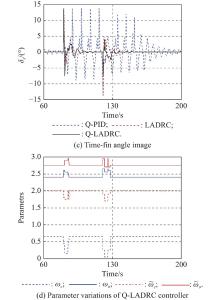| 1 |
ROBERT B Underwater robots: a review of technologies and applications. Industrial Robot: An International Journal, 2015, 42 (3): 186- 191.
doi: 10.1108/IR-01-2015-0010
|
| 2 |
ZHANG F M, MARANI G, SMITH R N, et al Future trends in marine robotics [TC Spotlight]. IEEE Robotics & Automation Magazine, 2015, 22 (1): 14- 122.
|
| 3 |
RYOSUKE K, SATOSHI O Development of hovering control system for an underwater vehicle to perform core internal inspections. Journal of Nuclear Science and Technology, 2016, 53 (4): 566- 573.
doi: 10.1080/00223131.2015.1064331
|
| 4 |
MANECIUS S J, ASOKAN T. Station keeping control of underwater robots using disturbance force measurements. Journal of Marine Science and Technology, 2016, 21(1): 70−85.
|
| 5 |
SATO Y, MAKI T, KUME A, et al Path replanning method for an AUV in natural hydrothermal vent fields: toward 3D imaging of a hydrothermal chimney. Marine Technology Society Journal, 2014, 48 (3): 104- 114.
doi: 10.4031/MTSJ.48.3.5
|
| 6 |
RIBAS D, PALOMERAS N, RIDAO P, et al Girona 500 AUV: from survey to intervention. IEEE/ASME Trans. on Mechatronics, 2012, 17 (1): 46- 53.
doi: 10.1109/TMECH.2011.2174065
|
| 7 |
ANTONELLI G. Underwater robots: motion and force control of vehicle-manipulator systems. Switzerland: Springer, 2010.
|
| 8 |
PRZEMYSŁAW H Decoupled PD set-point controller for underwater vehicles. Ocean Engineering, 2009, 36 (6): 529- 534.
|
| 9 |
TAHA E, MOHAMED Z, KAMAL Y T Control for dynamic positioning and way-point tracking of underactuated autonomous underwater vehicles using sliding mode control. Journal of Intelligent & Robotic Systems, 2019, 95 (3/4): 1113- 1132.
|
| 10 |
MOHAMMAD H K, SAEED B Modeling and control of autonomous underwater vehicle (AUV) in heading and depth attitude via self-adaptive fuzzy PID controller. Journal of Marine Science and Technology, 2015, 20 (3): 559- 578.
doi: 10.1007/s00773-015-0312-7
|
| 11 |
XUE Q Adaptive coordinated tracking control of multiple autonomous underwater vehicles. Ocean Engineering, 2014, 91, 84- 90.
doi: 10.1016/j.oceaneng.2014.08.019
|
| 12 |
HAN J Q. Auto-disturbance-rejection controller and its applications. Control and Decision, 1998, 13(1): 19–23. (in Chinese)
|
| 13 |
HAN J Q. From PID to active disturbance rejection control. IEEE Trans. on Industrial Electronics, 2009, 56(3): 900–906.
|
| 14 |
GAO Z Q. Scaling and bandwidth-parameterization based controller tuning. Proc. of the American Control Conference, 2006: 4989−4996.
|
| 15 |
LIU J J, SUN M W, CHEN Z Q, et al High AOA decoupling control for aircraft based on ADRC. Journal of Systems Engineering and Electronics, 2020, 31 (2): 393- 402.
doi: 10.23919/JSEE.2020.000016
|
| 16 |
CHEN Z Q, QIN B B, SUN M W, et al Q-learning-based parameters adaptive algorithm for active disturbance rejection control and its application to ship course control. Neurocomputing, 2020, 408, 51- 63.
doi: 10.1016/j.neucom.2019.10.060
|
| 17 |
ZHENG Y M, CHEN Z Q, HUANG Z Y, et al Active disturbance rejection controller for multi-area interconnected power system based on reinforcement learning. Neurocomputing, 2021, 425, 149- 159.
doi: 10.1016/j.neucom.2020.03.070
|
| 18 |
LI J H, LEE P M Design of an adaptive nonlinear controller for depth control of an autonomous underwater vehicle. Ocean Engineering, 2005, 32 (17/18): 2165- 2181.
doi: 10.1016/j.oceaneng.2005.02.012
|
| 19 |
LIU S Y, WANG D W, POH E Non-linear output feedback tracking control for AUVs in shallow wave disturbance condition. International Journal of Control, 2008, 81 (11): 1806- 1823.
doi: 10.1080/00207170801898885
|
| 20 |
XIANG X B, YU C Y, ZHANG Q Robust fuzzy 3D path following for autonomous underwater vehicle subject to uncertainties. Computers and Operations Research, 2016, 84, 165- 177.
|
| 21 |
LIANG X, QU X R, WANG N, et al. Three-dimensional trajectory tracking of an underactuated AUV based on fuzzy dynamic surface control. IET Intelligent Transport Systems, 2020, 14(5): 364−370.
|
| 22 |
LI Y, QIU X H, LIU X D, et al Deep reinforcement learning and its application in autonomous fitting optimization for attack areas of UCAVs. Journal of Systems Engineering and Electronics, 2020, 31 (4): 734- 742.
doi: 10.23919/JSEE.2020.000048
|
| 23 |
SHEN Y X, SHAO K Y, REN W J, et al Diving control of autonomous underwater vehicle based on improved active disturbance rejection control approach. Neurocomputing, 2016, 173 (3): 1377- 1385.
|
| 24 |
SUTTON R, BARTO A. Reinforcement learning: an introduction. Massachusetts: MIT Press, 1998.
|
| 25 |
LOW E S, ONG P, CHEAH K C Solving the optimal path planning of a mobile robot using improved Q-learning. Robotics and Autonomous Systems, 2019, 115, 143- 161.
doi: 10.1016/j.robot.2019.02.013
|
| 26 |
XIANG X B, YU C Y, ZHANG Q, et al Path-following control of an AUV: fully actuated versus under-actuated configuration. Marine Technology Society Journal, 2016, 50 (1): 34- 47.
doi: 10.4031/MTSJ.50.1.4
|
| 27 |
PRESTERO T. Verification of a six-degree of freedom simulation model for the REMUS autonomous underwater vehicle. Massachusetts Institute of Technology, 2001. DOI:10.1575/1912/3040.
|
| 28 |
YANG R, SUN M W, CHEN Z Q Active disturbance rejection control on first-order plant. Journal of Systems Engineering and Electronics, 2011, 22 (1): 95- 102.
doi: 10.3969/j.issn.1004-4132.2011.01.012
|
| 29 |
TANG D, GAO Z Q, ZHANG X H Design of predictive active disturbance rejection controller for turbidity. Control Theory and Applications, 2017, 34 (1): 101- 108.
|
| 30 |
XUE W C, HUANG Y Performance analysis of active disturbance rejection tracking control for a class of uncertain LTI systems. ISA Transactions, 2015, 58, 133- 154.
doi: 10.1016/j.isatra.2015.05.001
|
 ), Zengqiang CHEN1,2,*(
), Zengqiang CHEN1,2,*( ), Mingwei SUN1(
), Mingwei SUN1( ), Qinglin SUN1(
), Qinglin SUN1( )
)

